The turn of the 20th century proved to be a pivotal moment in global history. The rise of industrialism changed the landscape of modern cities worldwide. The Industrial Revolution led to improved methods of metal refining, most notably steel. Along with this discovery of new materials and building methods, this era also saw an increase in the globalization of the world. More cultures were in contact with each other, and the sharing of aesthetics and ideas flowed from one place to another with ease.
Art Nouveau was the response to these changes, beginning around 1890, and ending somewhere around the First World War. This movement was born out of similar sentiments to the Aesthetic movement in Britain and the Arts and Crafts Movement in Europe. A desire to modernize art and to dissolve the boundary between the decorative arts and ”fine” arts became an overriding theme to Art Nouveau. Artists and architects from this time disagreed on the form vs. function debate. Some artists relied heavily on decorative motifs, while others preferred to let the function dictate form.
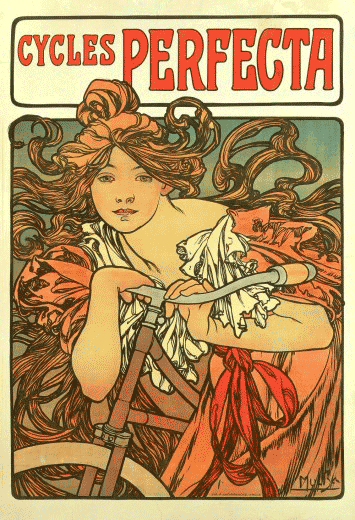
Art from this period has become iconic, with sinuous floral motif, and an overarching romantic, sensual flair. It’s no surprise that this style of art was particularly popular in Paris, but ended up spreading through most of Europe and parts of the United States within a few decades. However, it’s important to note that much of the Art Nouveau period was inspired by elements and styles from Japan and India. Notable figures at this time were Hector Guimard, Alphonse Mucha, Antoni Gaudi, and an American example – Louis Comfort Tiffany. Unlike many artistic periods, Art Nouveau seeped into nearly every genre of art.
Alphonse Mucha (1860-1939), an illustrative artist, is perhaps one of the most well known artists from this era. Most of his work involved posters depicting Sarah Bernhardt, a famous opera singer of the time. One of his most recognizable pieces is the Four Seasons, a panel of four images that personify each of the seasons. His work, and much of the art from this period, is extremely flat. As mentioned before, line shape and quality was frequently the most important aspect for artists, so color, shading, and depth stopped being the artistic representational focus, a trend that can be seen in nearly every piece of Mucha’s.
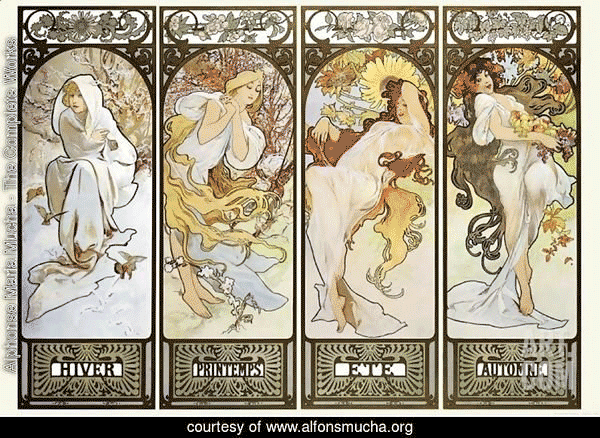
Much of Mucha’s art is defined by the strong bordering filigrees. These often feature geometric arcs and circles decorated with vine-like and floral decorations. The figures in each panel are also outlined in a strong line, with soft muted colors. Mucha’s font also took on “natural” and more organic characteristics, dispelling the more rigid typefaces of the past. Mucha became a popular artist of the time and was commissioned by companies to do advertisements for them. Job Cigarettes, Moet et Chandon, and Nestle are just a few of the major brands that used his artistic style.
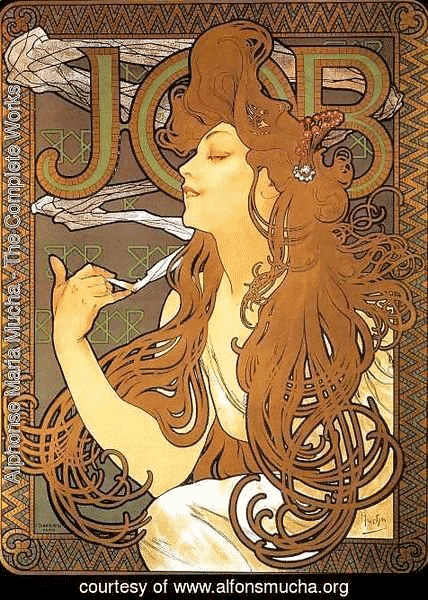
Though Mucha primarily worked in fine art, he also designed studies for home goods like cutlery, lamps, serving dishes, and interiors. While Mucha didn’t produce any of his objects, American glass mogul Louis Comfort Tiffany became well known for producing home furnishings. Tiffany’s legacy is preserved by his famous stained glass lamps depicting various natural forms. His work isn’t the most iconic from this era, but is a notable addition to the Art Nouveau period, and is one of the few Americans on this list of artists.
If one were to walk through Paris today, some elements of Art Nouveau can be seen dotting the streets, from re-creations of posters from the era to living landmarks. In some locations of Paris, Metro stations still have the original Art Nouveau constructions by Hector Guimard. Guimard (1867-1942) was one of the most prominent architects of the Art Nouveau era. His use of steel (a new material at the time) and glass was revolutionary, and provided a major departure from previous architecture stylings. The Metro station project changed the landscape of Parisian streets forever, and to this day remain an icon of the era. Unfortunately, most of the glass covered stations have not survived time.
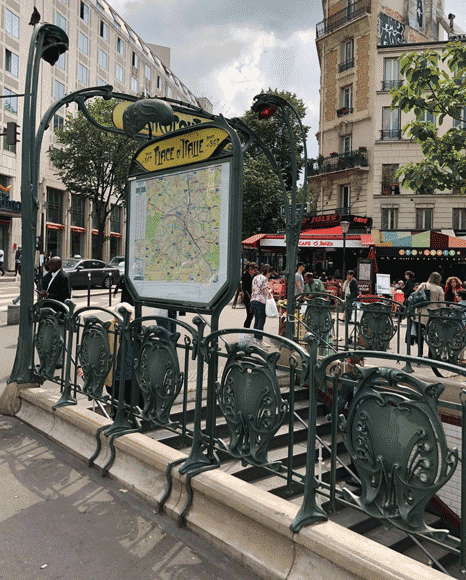
Compared to the rest of Parisian architecture, Guimard’s buildings stick out in style. Rather than rigid symmetrical shapes, Guimard used organic shapes and asymmetry. His buildings are famous for the relief carvings in stone and the prolific use of steel. This material, new at the time, allowed him to translate the sinuous shapes into physical representations of the style. His work exemplifies the era, and many buildings survive to this day, though a few of them are now residential properties.
While much of the art from the Art Nouveau period is similar in style and motifs, each artist had a definitive signature. While Guimard was working in Paris, his colleague Victor Horta was gaining popularity in Brussels. Similar to Guimard, Horta (1867-1947) also used glass and steel for many of his architectural creations, but his work is often described as more wispy. The Tassel House is one of the most notable examples of not only Horta’s work, but Art Nouveau architecture in general. It has all of the hallmarks of the era: strong yet sinewy lines in the decorative work, wide open spaces made possible by the use of steel and glass, and botanical motifs everywhere.
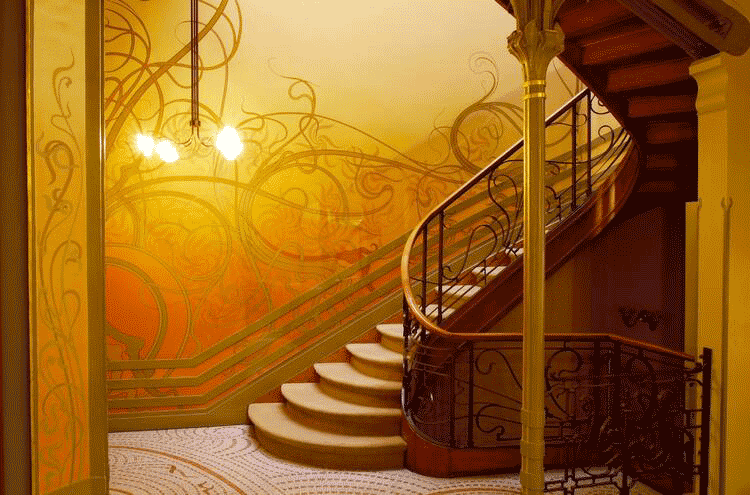
While Guimard was known more for his exteriors, Horta pushed the boundaries of interiors, and had a particular obsession with light. A recurring theme of his works was an open atrium in the center of the house lined with steel and a glass ceiling. This design element can be seen in the Hotel van Eetvelde. Stem and leaf-like structures adorn the supports, handrails, walls, etc. essentially covering the whole house in botanical elements.
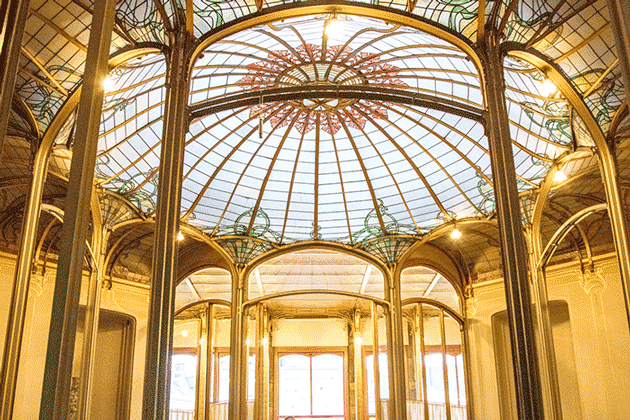
There was certainly a range of artists, moving from the sublime and elegant creations of Horta to the more alien works of Antoni Gaudi. Gaudi (1852-1926) was a Catalan architect that worked mostly in Spain. While his other European colleagues took much of their inspiration from floral and botanical sources, Gaudi referenced the sea and coast. Many of his buildings resemble the shapes, colors, and textures of seashells and other sea creatures as well as the sea itself. The Casa Battlo looks almost as if it could come alive with its scaled roof and colorful decoration on the facade.
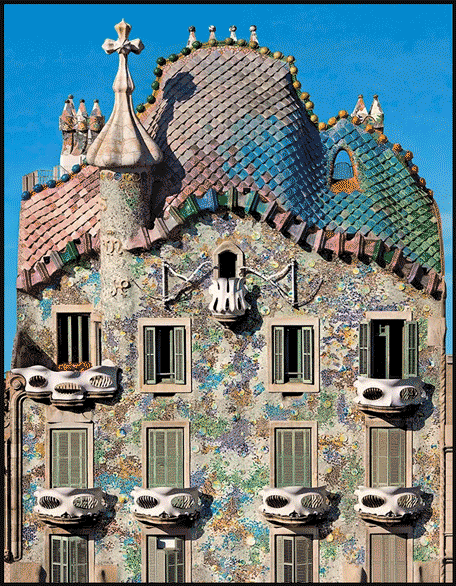
Interestingly, the original structure of the building was originally built many years prior, but the new owner Joseph Battlo hired Gaudi to re-do it. Originally slated for demolition, Gaudi chose to re-facade the home instead.
Gaudi was an ambitious architect, and didn’t complete many of his projects before he died. His project La Sagrada Familia in Barcelona is still unfinished. Gaudi took over the project in 1883, and completely changed the original plans. He worked on this project until his death in 1926, and to this day construction on the building is still underway. This basilica takes the references of the sea to heart, with it looking almost like a giant sand castle. Each spire is dedicated to a different holy figure, and currently all efforts are being put into finishing the second tallest tower, this one being dedicated to the Virgin Mary.
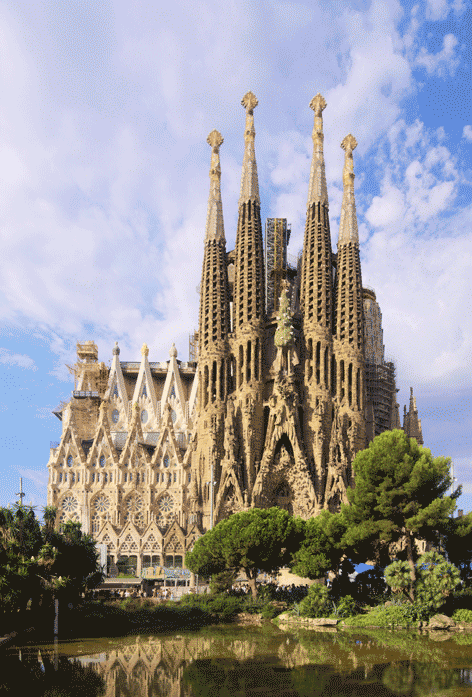
The beauty of this era comes from the diverse interpretations of the ethos behind Art Nouveau. Each artist and architect took inspiration from the natural world that they felt most connected to, and infused modern materials with that passion and style. While the argument of form following function doesn’t seem to hold up when looking at the heavily decorated art from this period, one can say that the breakthroughs in material at the time birthed the forms themselves. The Art Nouveau period unfortunately fell out of favor around the First World War, and was replaced afterwards with a new desire for modernism.
